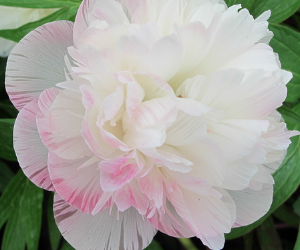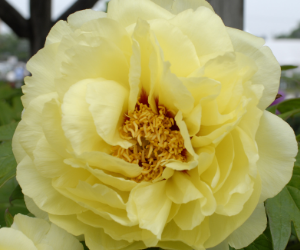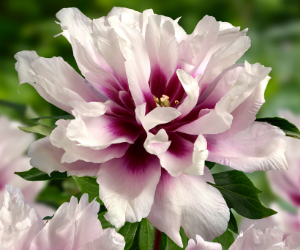Found yourself pondering over how the beloved peony found its way over to our neck of the woods? This is a subject I find endlessly fascinating. So much so, that in my efforts to condense things down into a brief history of peonies in Europe it all became more of a not-so-brief history of nearly everything (to semi-quote Bill Bryson). It became increasingly challenging to whittle it all down to what could be considered the most “important” bits, but here we are. My hope is that you will find some slightly lesser known facts to enrich your view of this historically diverse plant.
There are nearly 40 types of peonies that occur naturally in Central and Southern Europe, Caucasia, Asia and North America. The fragrant Chinese common peony (P.lactiflora) is a herbaceous perrenial originally used medicinally in China but by the seventh century they became popular as an ornamental plant and were placed under imperial protection. The emperor’s gardeners began creating more showy flowers which inspired his artists to capture them on screen paintings, tapestries, silk and porcelain.
By the eighth century peonies found their way to Japan as the Chinese traded the very valuable roots of these plants for goods. It is distinguished from the common peony (P. officinalis) by its leaves, which have finely jagged edges, and its fruits (follicles), which are smooth.
Several varieties of the European common peony (P.officinalis) can be found occurring naturally in Europe and were mostly used medicinally in the 1400s. Introduced to Britain before 1548, this herbaceous double crimson peony became possibly the best known common peony in gardens, often found surviving on their own on old/abandoned estates.
In 1789 the botanist Sir Joseph Banks had a tree peony (P.suffruticosa) brought to England by the British East India Company which was planted in Kew Gardens. European varieties known before the year 1800 come from P.officinalis and many of these came from France. Cultivation of herbaceous and tree peonies from the Far East began during the 1800s after discoveries were made by explorers.
In the early 1800s P.lactiflora was brought to France from China and introduced into European gardens. By the second half of the 1800s new hybrids were being developed by breeders such as Calot, Lemoine, Crousse and Dessert, many of which are still seen today. During this time peonies captured the imagination of many European Impressionists such as Gauguin, Manet, Monet, Delacroix, Renoir, Whistler and Fantin-Latour who included peonies in their paintings. Peonies also featured in Art Nouveau posters such as ones by Charles Rennie Mackintosh.
By the early 1900s different species were cross-fertilized bringing about the first herbaceous and tree hybrids. The first large double yellow tree peonies were created in France by Louis Henry, Maxim Cornù and Lemoine. These were hybrids of P. suffruticosa (cultivated for centuries in China and Japan) and P.lutea (a yellow-flower species brought to Europe from China by Abbé Delavay in the late 1800s) and had to be supported due to the weak stem and large flower combination.
However, in the 1950’s an American breeder of herbaceous peonies, Professor Saunders, rectified this by cross-fertilizing to increase the strength of the stem and creating a simpler flower - semi-double and double. Following on from Saunder’s work, William Gratwick and Nassos Daphnis made notable progress resulting in some of the most remarkable Lutea hybrids available. It was then in 1948 that Dr. Toichi Itoh from Japan cross-bred the herbaceous species (P.lactiflora) with the tree species (P.lutea), producing the “Intersectional”/”Itoh” hybrid we see today.
Found in so many different regions around the world, it's no surprise then that peonies suit so many different types of gardens. This gives us helpful insight as to where the best places are to plant peonies in your garden. We will be discussing that in a future post but, for now, this is it!







